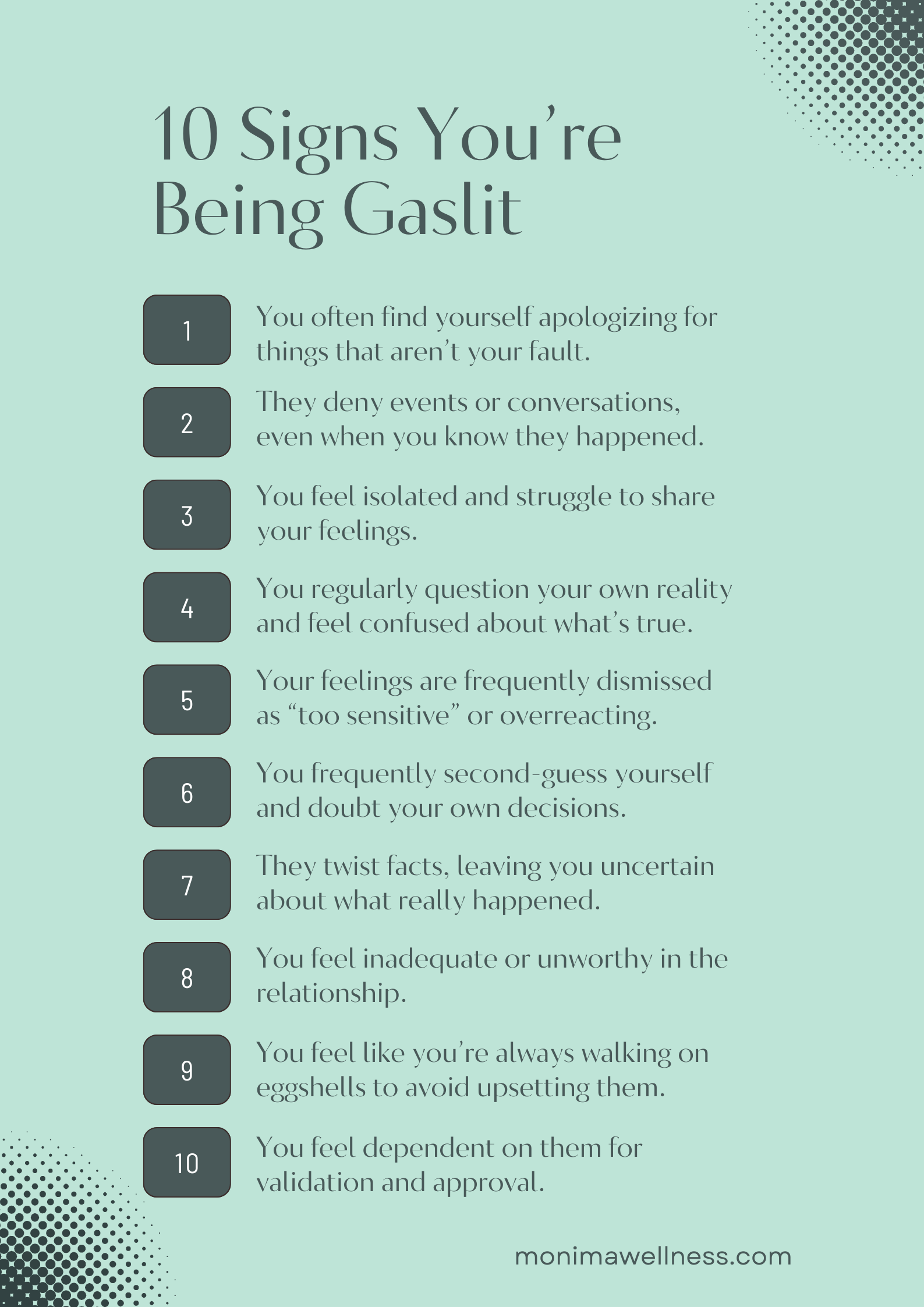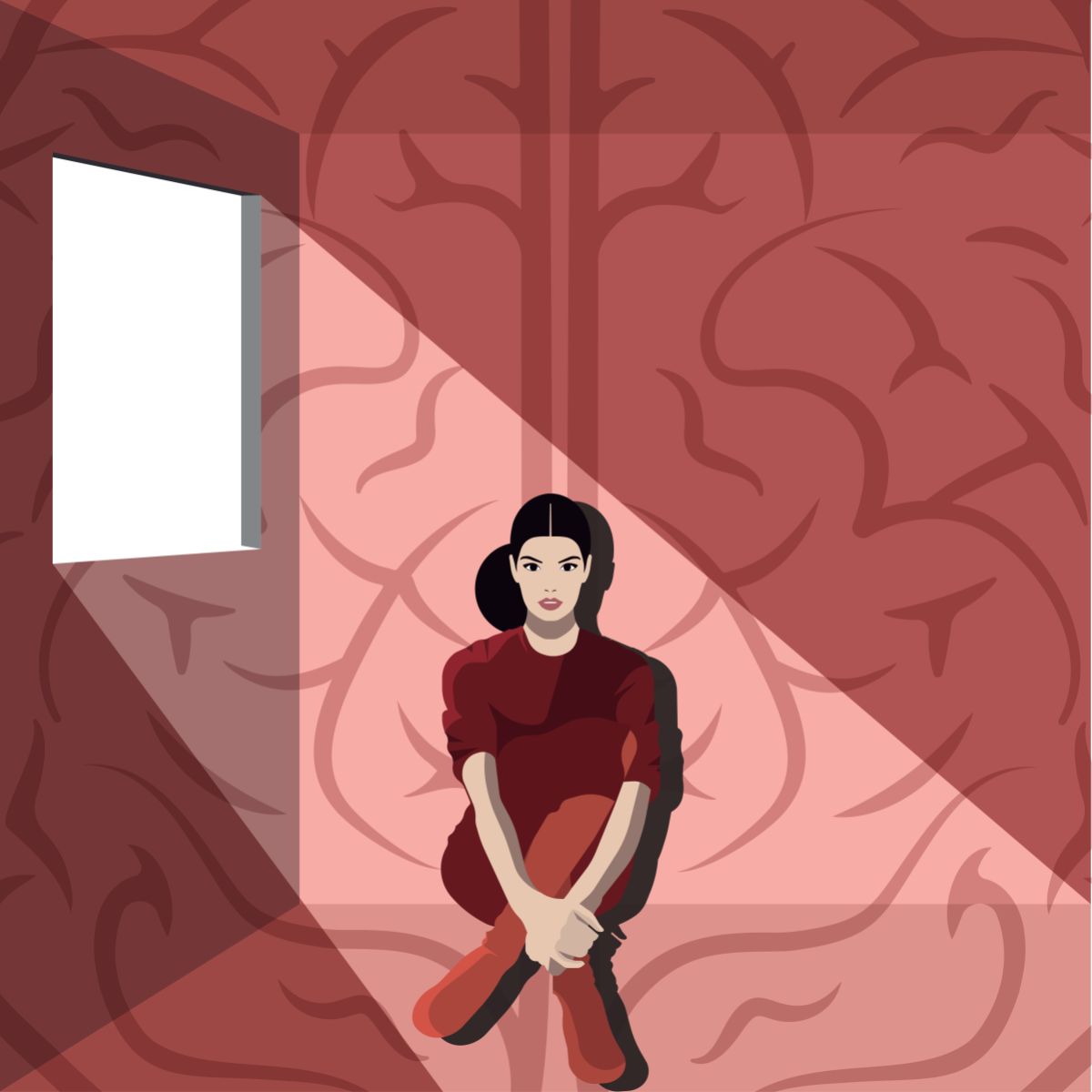Gaslighting is a form of psychological manipulation that challenges an individual’s sense of reality, pushing them into a spiral of doubt and confusion. Originating from the 1938 stage play ‘Gas Light’, this term now describes a scenario where the manipulator employs various tactics such as denying facts, withholding information, and trivializing the victim’s feelings, leading to severe emotional distress. This strategy isn’t confined to personal relationships; it extends into various domains including workplaces, political forums, and between child-parent dynamics, affecting individuals across different strata of society. Understanding the meaning, examples, and tactics of gaslighting is crucial, as it often unfolds subtly, leaving the victims unaware of the profound impact on their mental health.
The aim of this article is to delve deep into the anatomy of gaslighting, uncovering its signs, the indelible marks it leaves on one’s mental well-being, and the strategies to counteract its effects. Through examining real-life gaslighting examples and unnerving phrases commonly used in such settings, readers will gain insights into recognizing these manipulative behaviors and learn ways to protect themselves against such emotional abuse. A section dedicated to gaslighting awareness empowers individuals to dismantle the shroud of confusion often cast by manipulators, thereby fostering an environment of understanding and healing for those affected.
Table of Contents
ToggleUnderstanding Gaslighting

Gaslighting is a sophisticated form of emotional abuse that manipulates an individual’s perception of reality, often leading them to question their own memories, thoughts, and the events occurring around them. Understanding the dynamics of gaslighting is essential for recognizing and addressing this form of manipulation. Here are key insights and indicators:
Common Signs of Gaslighting:
- Frequent Lies and Denials: The abuser frequently lies about past events or conversations, even when there is evidence to the contrary.
- Undermining Emotions: Victims are often told they are too sensitive or are misinterpreting the situation, leading to self-doubt.
- Isolation: The abuser may isolate the victim from friends and family, making it harder for the victim to verify their perceptions or seek support.
- Manipulation of Reality: Gaslighters may alter physical elements in the environment or insist events happened differently to further confuse the victim.
Gaslighting Tactics:
- Denial of Reality: Persistent denial of facts and evidence, making the victim question their memory.
- Diversion: Changing the subject or questioning the victim’s thoughts to avoid addressing the issue at hand.
- Positive Followed by Negative Reinforcement: Initially praising or rewarding the victim, followed by criticism or withdrawal, creating an unpredictable emotional environment.
- Instilling Self-Doubt: Constantly questioning the victim’s abilities, thoughts, and worth, leading to decreased self-esteem.
Effects on Mental Health:
- Gaslighting can lead to severe emotional distress, including anxiety, depression, and a profound sense of isolation. The manipulation involved in gaslighting undermines the victim’s confidence and can significantly impact their mental health.
Recognizing these signs and tactics is a crucial step in combating gaslighting. It’s important for victims to trust their instincts and seek support from friends, family, or professionals who can help validate their experiences and feelings. Gaslighting awareness is key to dismantling the manipulator’s power and beginning the journey towards healing and empowerment.
Read : Developing Mental Strength: 10 Habits for Success
Signs of Being Gaslighted

Recognizing the signs of gaslighting is crucial to understanding and addressing this form of emotional abuse. Victims often find themselves in a cycle of confusion and self-doubt, making it difficult to see the situation clearly. Here are key indicators to watch for:
Constant Self-Reflection and Doubt:
- Feeling perpetually uncertain about one’s thoughts and decisions.
- Second-guessing oneself frequently, even on minor issues.
Emotional and Mental State:
- Experiencing feelings of confusion and feeling ‘crazy’.
- Frequent apologies, often without fully understanding why.
- A pervasive sense of hopelessness and joylessness, feeling markedly different from one’s former self.
Behavioral Changes:
- Hiding information from friends and family to avoid confrontations.
- Difficulty in making decisions, large or small.
- Isolation from social circles, leading to a loss of self-confidence and emotional instability.
Recognizing gaslighting behaviors is the first step toward protecting oneself. It’s important to trust your instincts and believe in your perceptions. Keeping conversations simple and straightforward, setting and adhering to personal boundaries, and practicing self-care are vital steps in dealing with gaslighting. Additionally, documenting interactions, involving trusted others, and seeking professional support can provide a foundation for understanding and overcoming the impact of gaslighting. Remember, it’s essential to avoid self-blame and to have an exit strategy if the situation does not improve.
Gaslighting tactics include a range of manipulative behaviors designed to undermine the victim’s reality. These can range from outright lying and denying to more subtle methods such as changing the subject, blame-shifting, and minimizing hurtful behaviors. Each of these tactics serves to separate the victim from their sense of truth and, often, from supportive relationships that could help counteract the gaslighter’s influence. Awareness of these tactics, coupled with a firm belief in one’s knowledge and experiences, is key to countering gaslighting’s corrosive effects on mental health and well-being.
The Effects of Gaslighting on Mental Health

Recovering from the psychological toll of gas lighting is a multifaceted process. It requires individuals to seek validation of their experiences, often from friends, family, or professionals who understand the intricacies of emotional abuse. Rebuilding social connections is equally critical, as gaslighting can lead to a sense of isolation. Therapy plays a pivotal role in this journey, offering support and strategies to restore self-esteem and address any mental health issues that have arisen due to the abuse. The path to healing involves acknowledging the abuse, understanding its effects, and actively working towards regaining a sense of self and reality.
The mental health repercussions of gaslighting are profound and can manifest in various forms:
Anxiety and Depression: The constant state of self-doubt and confusion can lead to chronic anxiety, with victims feeling on edge and unable to relax. Depression may also set in as a result of feeling helpless and trapped in the abusive situation.
Post-Traumatic Stress Disorder (PTSD): Experiencing gaslighting can be traumatic, and some individuals may develop PTSD, reliving the emotional abuse through flashbacks and nightmares, leading to intense stress and fear.
Suicidal Thoughts: The extreme distress caused by gaslighting can sometimes lead to suicidal thoughts, as victims may see no other way out of their situation.
Gaslighting’s impact on mental health can be particularly devastating for those who lack a strong support network or the resources to seek help. It’s crucial for victims to know that they are not alone and that what they are experiencing is a recognized form of emotional manipulation. Awareness and understanding are the first steps toward recovery.
The effects of gaslighting extend beyond the psychological, often leading to tangible changes in a person’s life:
Decreased Self-Esteem and Self-Confidence: Victims may find themselves questioning their worth and abilities, which can permeate all areas of life, from personal relationships to professional endeavors.
Cognitive Impairment: Difficulty concentrating, memory problems, and an inability to think clearly are common, as the mind grapples with distorted reality.
Strained Relationships: Trust issues may arise, and relationships with others can become fraught as the victim struggles with the aftermath of manipulation.
Addressing these challenges is essential in mitigating the long-term effects of gaslighting. It’s important for individuals to recognize that the healing process takes time and that seeking support is a sign of strength, not weakness.
How to Respond and Protect Yourself

Responding effectively to gaslighting is a critical step in protecting oneself from emotional abuse. Here are strategies to consider:
Trust Your Instincts and Document Everything:
- Keep a journal of events, conversations, and how they made you feel. This record can serve as a personal reminder of reality when in doubt.
- When you notice signs of gaslighting, trust your gut feeling. If something feels off, it likely is.
Stay Calm and Set Boundaries:
- Maintain composure when interacting with a gaslighter. A calm demeanor can prevent escalation and help you think clearly.
- Communicate your boundaries assertively. Let the gaslighter know which behaviors are unacceptable to you.
Seek Support and Develop Coping Strategies:
- Reach out to friends, family, or professionals who can provide validation and advice. They can offer a different perspective and help you stay grounded.
- Engage with a mental health professional to develop strategies for coping with gaslighting, rebuilding self-confidence, and addressing any mental health issues.
Remember, maintaining a strong sense of self and pursuing truth through education and self-reflection are essential in curbing the impact of gaslighting. If you or someone you know is experiencing domestic violence, resources such as the National Domestic Violence Hotline and the National Coalition Against Domestic Violence are available for support.
Conclusion
Throughout this exploration of gaslighting, we’ve illuminated the manipulative ploys that compromise one’s trust in their own perceptions, detailed the signs that can help one recognize when they’re being gaslighted, and offered strategies for fostering resilience and reclaiming agency. The journey to regain a foothold in reality starts with validating one’s experiences and embracing the support of others, weapons that not only fortify the spirit but also dismantle the grip of deceit. It’s in nurturing a self-authenticity that victims can begin to heal the wounds inflicted by such insidious manipulation.
In the face of gaslighting, armoring oneself with knowledge and a supportive network is paramount. For those standing at the crossroads of such a challenging experience, remember that the route to recovery—paved with self-care, assertiveness, and professional guidance—is within reach. Should you seek further assistance or wish to deepen your understanding of this subject, resources such as the National Domestic Violence Hotline are readily available, and if you or a loved one needs immediate support, consider reaching out as a vital step toward regaining control.


